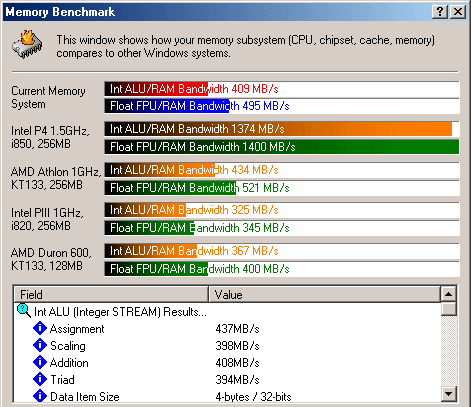|
|
If you like this site, please support us by spreading
the word.
We have made it easy to let your friends know about
us. Just click on the Recommend-It icon below.
|
|
Performance Aspects
The next logical question shortly followed: "did I actually benefit by partaking in this potentially risky
endeavor?" To better assess this question, SiSoft Sandra 2001's extensive array of processor and memory benchmarks
was employed. The first round of testing includes processor performance analysis for both integer and floating-point
performance. |
|
| |
|
|
Before Tweak:

|
| |
|
|
After Tweak:

|
| Bench testing of the processor leads to an inconclusive result, as only the floating-point
performance increased by a minor degree. As this benchmark relies mostly on internal processor core and cache performance,
the minimal return is to be expected. However, the memory benchmarking could lead to a different result since chipset
and BIOS optimization are both dominant factors in regards to the processor/memory connection pathway. |
| |
|
|
Before Tweak:

|
| |
|
|
After Tweak:

|
| In contrast to the processor test, the Sandra's memory benchmark clearly indicates
a rather substantial performance due to the BIOS modification. The new KT133A optimized BIOS offered the Duron
750 test system an average increase of 30 Megabytes per second for both integer and floating point testing. The
resultant bandwidth offers a significant performance impact in regards to multimedia intensive tasks, such as non-linear
video editing, image rendering, or even 3D-accelerated gaming. A freely available BIOS update afforded my system
a nice performance boost at absolutely no cost. |
| |
Modification Procedure . . . |
|
Back to Top
|
|
|

